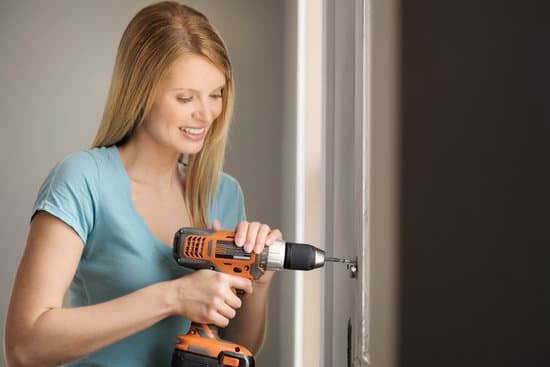Are you considering making improvements to your home in Hawaii? It’s important to understand what home improvements require a permit in Hawaii before starting any project. Building permits are essential to ensure that all construction and renovation work meets safety and building code standards, and failing to obtain the necessary permits can result in costly consequences.
In Hawaii, building permits are required for a wide range of home improvement projects, from minor renovations to major construction work. Understanding the regulations for obtaining these permits is crucial for homeowners looking to make any changes to their properties.
This article will provide valuable information on the regulations for home improvement projects in Hawaii, examples of improvements that require a permit, the process of obtaining a building permit, common misconceptions about permits, consequences of not obtaining a permit, and tips for navigating the permit process smoothly. By the end of this article, you’ll have a clearer understanding of the importance of following the permit requirements when making home improvements in Hawaii.
Regulations for Home Improvement Projects in Hawaii
When it comes to making home improvements in Hawaii, it is crucial to understand the regulations surrounding building permits. The state of Hawaii has specific requirements for obtaining permits for various home improvement projects. Understanding these regulations is essential to ensure that your project is in compliance with the law and to avoid any potential issues in the future.
In Hawaii, certain home improvement projects require a permit, while others do not. It’s important to be aware of what types of improvements necessitate a permit, as failure to obtain the necessary permit can result in penalties and complications down the line. Some examples of home improvements that typically require a permit in Hawaii include:
1. Structural changes: Any alterations or additions that impact the structural integrity of a building, such as adding or removing walls, or making changes to the foundation, usually require a permit.
2. Electrical work: Installing new electrical systems or making significant modifications to existing wiring typically requires a permit.
3. Plumbing work: Similar to electrical work, major plumbing projects such as installing new plumbing systems or making significant changes to existing ones usually require a permit.
Ensuring that you have the proper permits for your home improvement project is essential for compliance with state regulations and for the safety and structural integrity of your home. Navigating the process of obtaining a building permit in Hawaii can seem daunting, but understanding the requirements and following them diligently can help ensure a smooth process.
| Home Improvement Project | Typically Requires Permit |
|---|---|
| Structural Changes | Yes |
| Electrical Work | Yes |
| Plumbing Work | Yes |
Examples of Home Improvements That Require a Permit in Hawaii
When it comes to making improvements to your home in Hawaii, it’s important to be aware of which projects require a building permit. Failure to obtain the necessary permits for certain home improvements can result in fines, mandatory removal of the work done, or other consequences. Understanding which improvements require a permit is essential for homeowners to avoid these issues and ensure that their renovations are up to code.
Major Structural Changes
Any significant alterations that affect the structural integrity of your home will typically require a building permit in Hawaii. This includes additions such as expanding or adding new rooms, knocking down walls, or making significant changes to the foundational structure of the house. These types of projects often involve inspections by professionals to ensure that the work meets safety and building code standards.
Electrical and Plumbing Work
In Hawaii, any electrical or plumbing work usually requires a permit before it can be carried out. This applies to projects such as installing new electrical wiring, upgrading your electrical panel, adding outlets, or making modifications to your plumbing system. Since faulty electrical or plumbing work can pose serious safety hazards, obtaining permits for these types of improvements is crucial for ensuring that they are performed correctly.
Roofing and Siding Replacement
Replacing the roof or siding on your home is another example of a project that often requires a building permit in Hawaii. The installation of new roofing materials or siding can impact the structural integrity and protection of your home, so obtaining a permit ensures that these improvements meet state and local building codes. Additionally, permits typically also involve inspections to verify that the work complies with regulations and standards for safety and quality.
By understanding which home improvements require a permit in Hawaii and following the proper procedures for obtaining permits, homeowners can ensure that their renovations are legal, safe, and up to code. Whether you’re planning major structural changes, electrical upgrades, or exterior replacements like roofing and siding, it’s essential to research permit requirements before beginning any home improvement project in Hawaii.
The Process of Obtaining a Building Permit in Hawaii
In Hawaii, certain home improvements require a building permit in order to ensure that the work meets safety and zoning regulations. It is important to understand the process of obtaining a building permit in Hawaii, as failure to do so can result in costly consequences. The following is a step-by-step guide to help homeowners navigate the permit process for their home improvement projects.
The first step in obtaining a building permit in Hawaii is to determine whether your project requires one. This can be done by contacting the local building department or visiting their website to review their list of projects that require permits. Common examples of home improvements that typically require a permit in Hawaii include structural alterations, electrical work, plumbing installations, and major renovations.
Once you have established that your home improvement project requires a building permit, the next step is to prepare the necessary documentation. This may include detailed plans or drawings of the proposed work, engineering calculations if necessary, and a completed permit application form. It is important to ensure that all documentation submitted meets the requirements set forth by the local building department to avoid delays in the permitting process.
After preparing all required documentation, you will need to submit your permit application along with any associated fees to the local building department. The application will then be reviewed by building officials who will determine whether it complies with local regulations. If approved, you will receive your building permit which allows you to move forward with your home improvement project in compliance with state and local laws.
| Home Improvement Project | Permit Required |
|---|---|
| Structural alterations | Yes |
| Electrical work | Yes |
| Plumbing installations | Yes |
Common Misconceptions About Building Permits in Hawaii
Many homeowners in Hawaii have misconceptions about building permits and what home improvements require a permit in Hawaii. It’s important to clear up these misunderstandings to ensure that all necessary permits are obtained for any home improvement project. Here are some common misconceptions about building permits in Hawaii:
- “Small projects don’t need a permit”: One of the most prevalent misconceptions is that small home improvement projects don’t require a permit. In reality, even minor renovations such as replacing windows or doors may necessitate a permit, depending on the specific regulations in your area.
- “Permits are just a hassle”: Some homeowners believe that obtaining a permit for their home improvement project will only slow down the process and add unnecessary complications. However, building permits are essential for ensuring that construction meets safety standards and local building codes.
- “I can work without a permit as long as no one finds out”: It’s a common belief that you can proceed with a home improvement project without obtaining the necessary permits as long as you don’t get caught. However, this approach can lead to serious consequences, including fines and having to undo the work if it doesn’t meet requirements.
Understanding these misconceptions is crucial for homeowners in Hawaii to avoid potential legal issues and ensure that their home improvement projects are conducted lawfully and safely.
It’s important to educate yourself and seek guidance from professionals when it comes to building permits in Hawaii, especially when unsure about whether a specific home improvement requires a permit or not. By being well-informed, you can navigate the permit process more smoothly and avoid any potential setbacks or legal repercussions down the line.
Overall, it’s essential for homeowners in Hawaii to recognize the significance of obtaining building permits for home improvement projects and to dispel any misunderstandings about the process to ensure that their renovations are compliant with local regulations.
Consequences of Not Obtaining a Building Permit for Home Improvements in Hawaii
Undoubtedly, obtaining a building permit for home improvements in Hawaii is crucial to ensure that the work is done safely and up to code. However, some homeowners may be tempted to skip this step in order to save time and money. It’s important to understand the potential consequences of not obtaining a building permit for home improvements in Hawaii.
Here are some of the potential repercussions of proceeding with home improvement projects without the necessary permits:
1. Legal Issues: Without a permit, homeowners can face legal consequences such as fines or even having to undo the work that was done without proper approval.
2. Safety Concerns: Building permits ensure that home improvements meet safety standards and building codes. Without a permit, there is no guarantee that the work has been inspected and approved for safety.
3. Property Value Impact: Unpermitted work can impact the value of a property if it does not meet code requirements and could lead to difficulties when selling or refinancing the home.
Tips for Navigating the Permit Process in Hawaii Smoothly
When it comes to undertaking home improvement projects in Hawaii, navigating the permit process smoothly can be a key factor in ensuring the success of your project. Here are some essential tips to help you through the process:
Research Permit Requirements
Before starting any home improvement project, it’s crucial to research which improvements require a building permit in Hawaii. Understanding the specific requirements related to your project will save you time and hassle later on. You can contact your local building department or visit their website for information on permit requirements.
Work With a Professional
Consider hiring a professional contractor or architect who is familiar with local building codes and permitting processes in Hawaii. They can guide you through the necessary steps and ensure that your project complies with all permit regulations.
Plan Ahead
It’s important to plan ahead and allow sufficient time for the permit application process. Delays in obtaining permits can significantly impact the timeline of your home improvement project, so make sure to factor in the time required for permit approvals when scheduling your project.
By following these tips and staying informed about what home improvements require a permit in Hawaii, you can navigate the permit process more smoothly and ensure that your home improvement project meets all legal requirements.
Conclusion
In conclusion, it is vital for homeowners in Hawaii to understand and follow the permit requirements for home improvements. The regulations for building permits in Hawaii are in place to ensure the safety and structural integrity of homes, as well as to maintain the aesthetic and environmental standards of the community. Ignoring these requirements can lead to serious consequences, including fines, legal issues, and difficulties with future property transactions.
Whether it’s a major renovation or a small improvement project, it’s important to check what home improvements require a permit in Hawaii before starting any work. Examples of home improvements that typically require a permit in Hawaii include electrical upgrades, plumbing work, structural changes such as adding or removing walls, installing a new roof or windows, and building an extension or addition to the existing structure.
Navigating the permit process may seem daunting at first, but by understanding the regulations, following the appropriate steps, and seeking guidance when needed, homeowners can ensure that their home improvement projects are carried out legally and safely. By taking the time to obtain the necessary permits for home improvements in Hawaii, homeowners can have peace of mind knowing that their property is compliant with local regulations and will maintain its value over time.
Frequently Asked Questions
Do You Need a Permit to Remodel in Hawaii?
Yes, you do need a permit to remodel in Hawaii. The state requires permits for most types of remodeling work, including structural changes, electrical and plumbing work, as well as installing new windows or doors.
Do I Need a Permit to Put Up a Fence in Hawaii?
In Hawaii, you generally need a permit to put up a fence. The specific requirements may vary by location and the type of fence you plan to install. It’s best to check with your local building department for the exact regulations.
Do You Need a Permit to Build a Retaining Wall in Hawaii?
Building a retaining wall in Hawaii typically requires a permit. This is because retaining walls can have an impact on drainage and soil stability, so it’s important to ensure they are properly designed and constructed to meet safety and environmental standards.

I’m thrilled to have you here as a part of the Remodeling Top community. This is where my journey as an architect and remodeling enthusiast intersects with your passion for transforming houses into dream homes.





